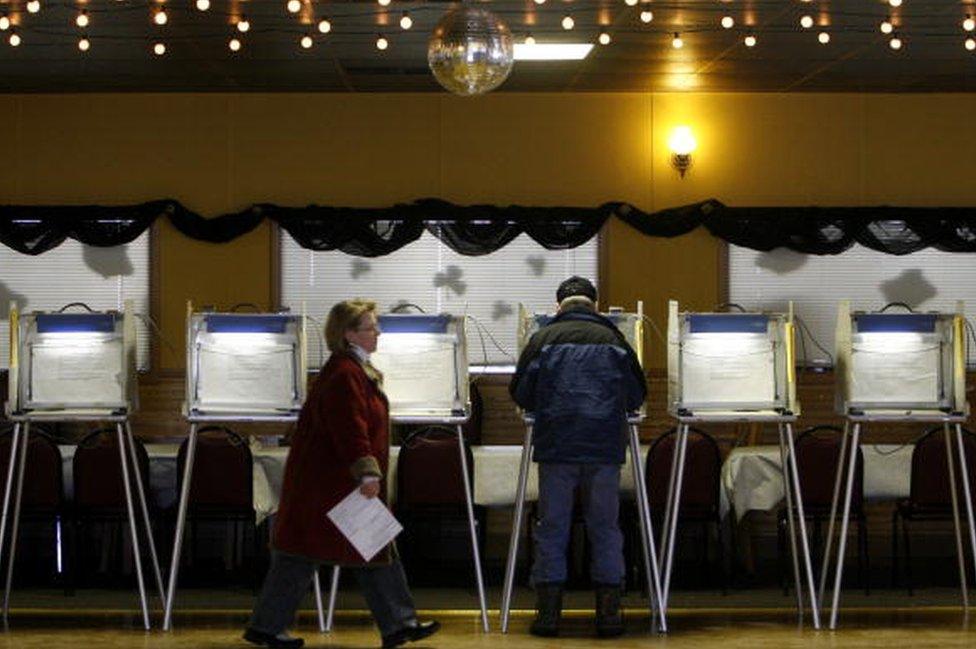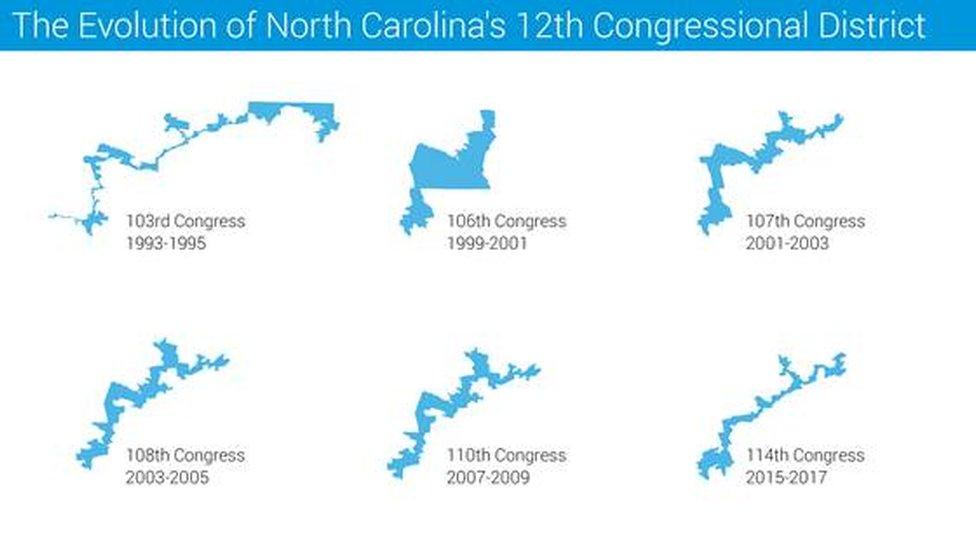US Supreme Court to rule on gerrymandering
- Published

A lower court ruled that voters in the state of Wisconsin had their constitutional rights violated
The Supreme Court will soon determine if gerrymandering, where voting districts are re-drawn in order to favour political parties, is legal.
They will review a state ruling which found that officials engaged in "an unconstitutional partisan gerrymander".
A federal court ruled in Wisconsin that Republican lawmakers had violated the US Constitution's equal protection under the law and free speech clauses.
The case will set a legal precedent on the long-time political practice.
In May, the Supreme Court invalidated state electoral maps in North Carolina, after finding that Republicans legislators re-drew them to diminish the political clout of African-American voters.

The Supreme Court recently ruled that North Carolina had carried out unconstitutional racial gerrymanders
But the court has never ruled on electoral maps that have been re-drawn simply to give a political advantage to one party over another.
In states controlled by Republicans, Democrats have long complained that voting districts are designed to disadvantage them. And the reverse applies in Democratic states, although they are fewer in number.
In 2010, when districts were last redrawn, Republicans controlled the process in a majority of states, which helped lock in their electoral advantage.

Why this matters - Anthony Zurcher, BBC News, Washington
The last time the Supreme Court looked at a challenge to partisan redistricting, the justices tied themselves in knots trying to resolve the case, ending with a muddled decision that didn't answer the basic question. Can politicians take politics into account when picking who their voters will be?
The cleanest answer for the nine justices would be to reverse the lower court decision striking down Wisconsin's legislative districts as too partisan. That would preserve the status quo and leave the battle over the perceived ills of partisan gerrymandering to politicians and voters.
A decision to uphold the ruling, on the other hand, would send courts across the US head-first into a legal thicket, where they would be asked to glean legislative intent in district-drawing and pore over electoral maps and data to discern evidence of imbalance.
It's a practice federal courts are already familiar with when it comes to allegations of racial bias in redistricting, resulting in protracted legal battles that have often stretched on for years.
This Supreme Court, with its conservative majority, may shy away from such an outcome. All we know right now, however, is that they have decided take a closer look.

Up to one-third of electoral maps in the US could be affected by the justices' ruling, which is expected in the autumn.
Maps are re-drawn by lawmakers periodically, in order to assign congressional representatives in proportion to US census data.
The practice of gerrymandering has grown and become more specific since the invention of modern computing technology, which allows politicians to more easily identify their supporters.
The term is named after 18th Century vice-president and Massachusetts governor Elbridge Gerry, who approved a politically carved-up voting district that was likened in shape to a salamander.
- Published13 December 2011
